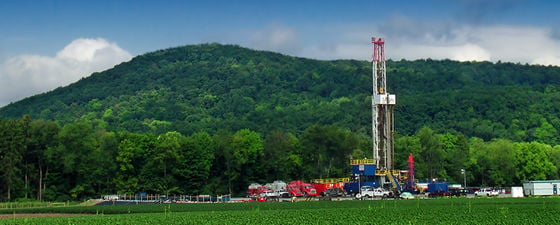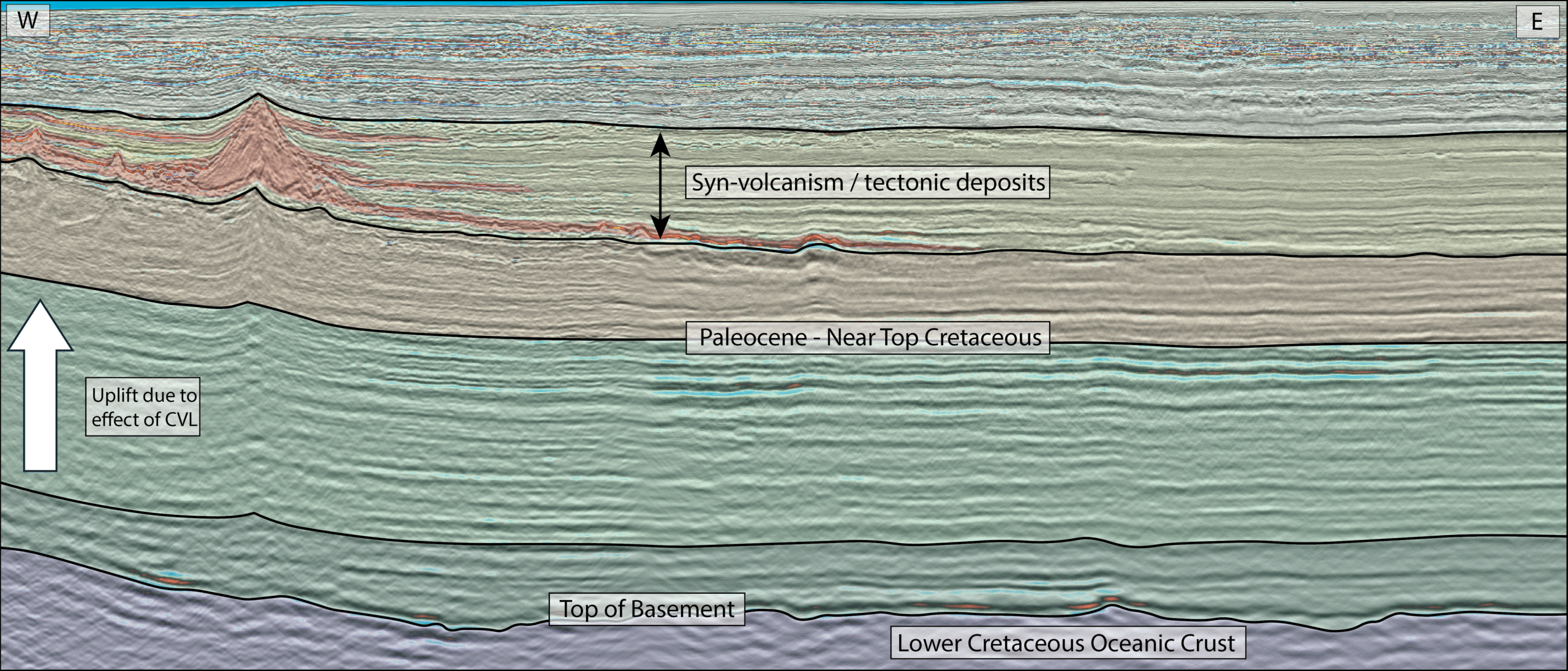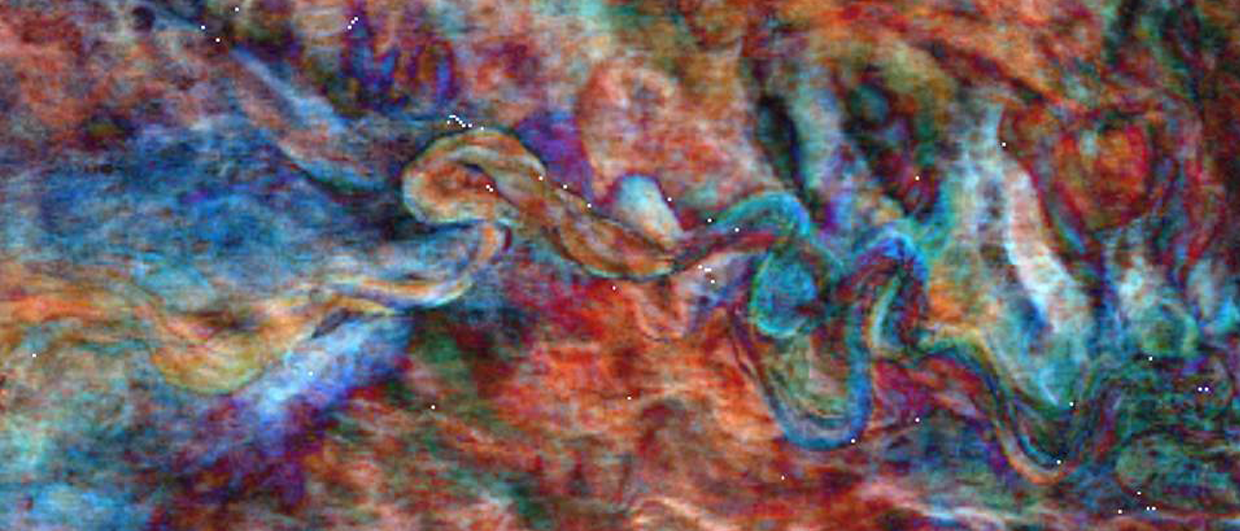The origin of shale gases has important implications on their ability to provide hydrocarbon reserves.
As we all know, the discovery that gas formed and locked in shale source rocks can be released and extracted has revolutionised the US energy scene. According to the EIA, large-scale natural gas production from shale began around 2000, when it became a commercial reality in the Barnett Shale in north-central Texas; by 2005, this formation was producing almost half a trillion cubic feet of natural gas a year. Other US shale gas plays followed and production ramped up rapidly, so that by 2019 average daily production was over 65 Bcfg.
Marcellus shale gas drilling site. Source: Pxhere.com
Could this be replicated elsewhere? Shale gases have different origins, and to answer this question it is important to be able to identify the key elements in composition and origin that will turn a shale gas into a useful resource.
Although the wide body of petroleum geochemistry literature attests a general knowledge on how and why gas originates in a shale, there are several specific important processes and mechanisms that remain elusive. The following text attempts to clarify what is known and takes a look at the unknowns.
We know that natural gases in sedimentary rocks result from either microbial or thermogenic activity (abiotic generation mechanisms may play an important role in some igneous rocks), and are affected by post-generation processes such as oxidation, mixing, biodegradation and thermochemical sulphate reduction. Petroleum geochemists study samples from known producing formations and use the molecular and isotopic composition of these to begin to understand the processes involved in the formation of gas in shale and the implications for potential resources.
But, globally, how much shale gas is thermogenic, and how much is microbial? Does the origin and source rock maturity of a gas influence shale gas productivity? And can shales be economic sources of other strategic gases, such as helium?
Shale Gas Composition
Using a worldwide database of over 2,000 samples from ten countries across five continents and including China, Canada, Saudi Arabia, Argentina, the UK and Poland, as well as major US plays, it is possible to produce a summary of the composition of global shale gases. The data were collected from more than 80 peer-reviewed papers, government databases and research theses and reports and predominantly were taken from production samples, with some data from degassed cores. The database covers more than 65 different shale formations that range in age from Proterozoic to Miocene.
Summary of composition of global shale gases, methane (C1) to pentanes (C5); N2 = nitrogen; CO2 = carbon dioxide.
As can be seen from the diagram (right), globally hydrocarbons dominate in most gases, forming on average 92% of the gas composition, with methane being the main hydrocarbon gas. Average methane (C1) is 85% and ethane (C2) is 5%, which highlight the commercial value of shale gases.
Some gases, particularly those desorbed from shale cores, are enriched with nitrogen (N2), which may partially be related to air contamination. However, there are some nitrogen-enriched gases, such as in the Cambrian Niutitang Formation in China, in which nitrogen comprises up to 97% of total gas. It is thought that this may result from thermal transformation of organic matter and/or from NH4-rich illites of the clay facies.
Some gases are enriched in CO2, which may result from oil biodegradation, as has occurred in the US New Albany and Antrim shales. Also, when the gas is reservoired in carbonate-dominated tight formations, such as the case of the Canadian Pardonet and Baldonell Formations, it may be subject to thermal sulphate reduction, which leads to high CO2 and hydrogen sulphide (H2S). The Pardonet / Baldonell, for example, contains 7.5 – 29.5% H2S, while the Horn River shale in Canada is believed to have up to 12% CO2 as well as traces of H2S.
Shale gases appear to contain very little helium, much less than is usually found in conventional or coal bed methane reservoirs. This is because shales do not interact much with the aquifers that supply noble gases to conventional reservoirs. Whatever helium is present in the shales is usually thought to be of crustal origin, as is evidenced by helium isotopes, while, in contrast, conventional reservoirs may have helium of magmatic origin.
Origins of Shale Gases
Plotting the composition of gases using genetic diagrams can help us interpret the origins of shale gas. The most commonly used diagram, developed in 1977 by Bernard et al., is based on hydrocarbon gas composition expressed as C1/(C2+C3) plotted against the isotopic composition of methane, and this has been modified (Milkov and Etiope, 2018; 2019) to the versions shown below. These diagrams allow us to identify whether the gas is of either primary microbial origin, i.e., it formed as part of the initial diagenetic sequence of sedimentary organic matter; secondary microbial origin, originating from anaerobic biodegradation of oils; thermogenic, resulting from burial of organic material and its subsequent heating; or is abiotic gas, which is generated by magmatic and gas–water–rock reactions that do not directly involve organic matter.
A plot of all shale gases on revised gas genetic diagrams, showing that most are thermogenic with variable maturities (CR = CO2 reduction, F = methyltype fermentation, EMT = early mature thermogenic gas, OA = oil-associated (mid-mature) thermogenic gas, LMT = late mature thermogenic gas).
The diagrams demonstrate that a large percentage of shale gases are of thermogenic origin. The maturity of these thermogenic gases varies widely from early to late-mature, although most gases appear to be mid-mature (i.e. oilassociated) or late-mature. While secondary microbial gases from petroleum biodegradation are abundant, there are few shale gases of purely primary microbial origin.
The use of a large database has enabled recognition of early-mature thermogenic gases and this has resulted in the re-evaluation of a number of plays. Early-mature thermogenic gases have been identified in the Tøyen Formation in Sweden and the Canadian Colorado Formation. Gases from the Antrim and the New Albany Formations in the US have often been considered to be primary microbial or early-mature thermogenic in origin, but the revised genetic diagrams suggest that these gases are in fact mixtures of early mature thermogenic gases and secondary microbial gases generated from biodegraded petroleum fluids. The main reason for such interpretation is that these gases have CO2 that is highly enriched in 13C, a feature that is typical for secondary microbial gases.
Shale gases on gas genetic diagrams of δ13C-CH4 vs C1/(C2+C3), showing that most productive and commercially successful shale plays have mid-mature and late-mature thermogenic gas (left) while less productive plays have early-mature thermogenic and secondary microbial gas (right).
Identifying thermogenic gases and their maturity levels in shale plays is important. Right is a diagram of some of the most productive shale plays in the USA and around the world, including gases from the Barnett, Eagle Ford, Fayetteville, Haynesville, Marcellus, and Woodford shales in the US, the Wufeng-Longmaxi shale in China and the Vaca Muerta play in Argentina. From this it is easy to see that most commercially successful shale plays – those with the largest resources and greatest productivity – contain mid to late-mature thermogenic gases. Plays with late-mature thermogenic gas, such as the US Marcellus Formation and the Wufeng-Longmaxi Formation in China, appear to be the most productive.
However, gases with a secondary microbial origin also have a role to play; in fact, gases with early-mature thermogenic origin and secondary microbial origin have been produced for many years. Examples include the fractured shale reservoirs of the Antrim Formation in the Michigan Basin, USA, which have been producing since the 1980s, and the New Albany Formation in the Illinois Basin, USA, has been exploited for gas for over 150 years. Most of the gas in these formations is early-mature thermogenic in origin, but with a significant contribution from secondary microbial gases that formed from biodegraded petroleum, mostly oil, generated in the early-mature thermogenic shales. However, gases originating through secondary microbial processes in shales are not considered to represent a significant resource because of the relatively low gas volumes generated through that process. Shales with primary microbial gas are not common and, when found in shale gas reservoirs, to date they have not been produced. It would appear that the process of primary microbial gas generation is the least efficient at forming and preserving large volumes of gases in shale reservoirs.
Shale plays containing more mature thermogenic gas have larger gas endowments.
Gas Geochemistry Plots: A Useful Screening Tool
Shale gas exploration is driven, to a large extend, by the resource size of the play, the productivity of shale reservoirs and expected ultimate recovery of wells and their commerciality. The gas geochemistry plots generated through the use of a large global database can therefore be used to identify the origin of the gases and act as a screening tool to predict the potential of emerging shale plays.
References:
Bernard, B., J. M. Brooks, and W. M. Sackett, 1976, Natural gas seepage in the Gulf of Mexico: Earth and Planetary Science Letters, v. 31, p. 48–54.
Bernard, B., J. M. Brooks, and W. M. Sackett, 1977, A geochemical model for characterization of hydrocarbon gas sources in marine sediments: Proceedings of the 9th Annual OTC Conference, OTC 2934, p. 435–438.
Nuttall, B. C., 2013, Middle and Late Devonian New Albany Shale in the Kentucky Geological Survey Marvin Blan No. 1 Well, Hancock County, Kentucky: Report of Investigations 17, Series XII, Kentucky Geological Survey, 72 p.
Coleman, D. D., 2001, -70‰ methane, is it biogenic or thermogenic?: AAPG Search and Discovery Article #90906.
Liu, Y., J. Zhang, J. Ren, Z. Liu, H. Huang, and X. Tang, 2016, Stable isotope geochemistry of the nitrogen-rich gas from lower Cambrian shale in the Yangtze Gorges area, South China: Marine and Petroleum Geology, v. 77, p. 693-702.
Martini, A. M., L. M. Walter, T. C. W. Ku, J. M. Budai, J. C. McIntosh, and M. Schoell, 2003, Microbial production and modification of gases in sedimentary basins: A geochemical case study from a Devonian shale gas play, Michigan basin: AAPG Bulletin, v. 87, p. 1355–1375.
Milkov, A. V., 2011, Worldwide distribution and significance of secondary microbial methane formed during petroleum biodegradation in conventional reservoirs: Organic Geochemistry, v. 42, p. 184–207.
Milkov, A. V., 2018, Secondary microbial gas, in H. Wilkes, ed., Hydrocarbons, Oils and Lipids: Diversity, Origin, Chemistry and Fate. Handbook of Hydrocarbon and Lipid Microbiology. Springer, Cham. doi.org/10.1007/978-3-319-54529-5_22-1
Milkov, A. V., and G. Etiope, 2018, Revised genetic diagrams for natural gases based on a global dataset of >20,000 samples: Organic Geochemistry, v. 125, p. 109-120.
Milkov, A.V. and G. Etiope (2019) Origin of shale gases from around the world: Implications for exploration. Unconventional Resources Technology Conference (URTeC), Denver, Colorado, USA, 22-24 July 2019. DOI 10.15530/urtec-2019-465.
Schoell, M., 1983, Genetic characterization of natural gases: AAPG Bulletin, v. 67, p. 2225–2238.
Tilley, B., S. McLellan, S. Hiebert, B. Quartero, B. Veilleux, and K. Muehlenbachs, 2011, Gas isotope reversals in fractured gas reservoirs of the western Canadian Foothills: Mature shale gases in disguise: AAPG Bulletin, v. 95, p. 1399–1422.
Whiticar, M. J., E. Faber, and M. Schoell, 1986, Biogenic methane formation in marine and freshwater environments: CO2 reduction vs. acetate fermentation – isotope evidence: Geochimica et Cosmochimica Acta, v. 50, p. 693–709.
Zumberge, J., K. Ferworn, and S. Brown, 2012, Isotopic reversal (‘rollover’) in shale gases produced from the Mississippian Barnett and Fayetteville formations: Marine and Petroleum Geology, v. 31, p. 43- 52.
Further Reading on Shale Gas
Something Worth Arguing About
Katherine Cook
The newly launched European Shale Gas Argument Map aims to provide information both for and against the extraction of shale gas.
This article appeared in Vol. 10, No. 3 – 2013
Is Shale Gas Bringing Independence?
Thomas Smith
Shale gas has helped the US to become the world’s largest gas producer. Will shale gas and shale oil production lead America to energy independence?
This article appeared in Vol. 9, No. 2 – 2012
Is the ‘Shale Gale’ blowing itself out?
David Bamford
Are low gas prices and environmental issues taking the wind out of the ‘Shale Gale’?
This article appeared in Vol. 7, No. 6 – 2010
The Marcellus Shale
Halfdan Carstens, GeoPublishing and Hobart King, geology.com
The gas potential of the Marcellus Shale of the Appalachian Basin has made it an attractive investment opportunity. Horizontal wells and hydraulic fracturing have boosted production rates and recoverable reserves in these low permeability rocks.
This article appeared in Vol. 5, No. 6 – 2008





